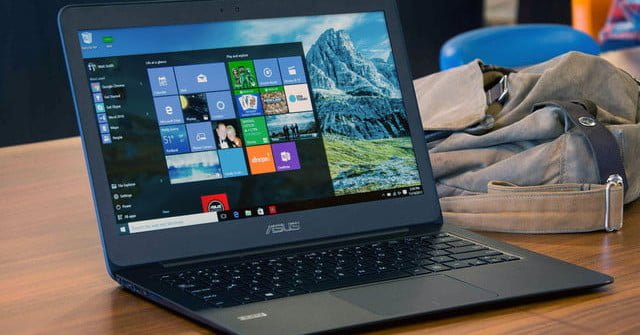Nothing is quite as impersonal and boring as the generic background already loaded on your computer. Whether it’s a drop of water or a landscape view of a place you’ve never been, it’s time to change it to something more reflective of you.
This guide shows you how to change the wallpaper of your Windows 10 desktop using a few simple steps. We’ll also show you how to change the background for the Lock and Sign-In screens. Want to use a third-party app instead? We have a favorite to recommend.
Change your wallpaper

Step 1: Right-click anywhere on the Desktop and select Personalize on the pop-up menu. The Settings app should open to the Personalization section by default and display your background options.
Alternatively, you can click on the Start button followed by the Gear icon displayed on the Start Menu to open the Settings app. There you can select Personalization.

Step 2: Click the Down arrow next to Background and select one of three options: Picture, Solid Color, or Slideshow. In this example, we selected Picture. If you chose Slideshow or Solid Color, move on to the next sections.
Step 3: Select a Thumbnail displayed under Choose Your Picture and it automatically replaces your background. If the desired image isn’t displayed, move on to Step 4.
Step 4: Click the Browse button.
Step 5: When file Explorer appears on the screen, locate the image you want to use and click the Choose Picture button. It’s now set as your background.
Step 5: Click the Down arrow next to Choose a Fit and select one of six options: Fill, Fit, Stretch, Tile, Center, or Span.

If you have more than one connected monitor, you can set a different background for each one. Let’s continue on and change the second display.
Step 6: With Settings still open, right-click on a Thumbnail displayed under Choose Your Picture.
Step 7: Select the Set for Monitor 2 option on the pop-up menu.
Step 8: Rinse and repeat for any additional screen.
Note: To use multiple wallpapers, you’ll need to add each picture to the thumbnail ribbon by clicking the Browse button and selecting an image. This image fills Display 1, so you’ll need to reset that screen’s wallpaper each time you add an image to the thumbnail ribbon.
Slideshow options

If you chose Slideshow, you have a different set of options. Keep in mind that if you have more than one display, a different wallpaper will appear on each one.
Step 1: Click the Browse button and locate the folder containing the images you want to use as wallpapers. You do not need to select the images individually.
Step 2: Click the Down arrow next to Change Picture Every and select one of six options spanning one minute to one day.
Step 3: Toggle the Shuffle feature on or off.
Step 4: Enable or disable the slideshow when running on battery power.
Step 5: Click the Down arrow next to Choose a Fit and select one of six options: Fill, Fit, Stretch, Tile, Center, or Span.
Solid Color options

If you chose a solid color, your only options are to select one of 24 color swatches, or click the Plus button next to Custom Color and create a background color.
Change your lock screen / sign-in screen

While you can change the wallpaper for both the Lock and Sign-In screens, you can also choose what appears on each one. As you adjust the wallpaper, you’ll see options to select an app that can show its detailed status, and select seven additional apps to show their quick status. Leave these blank if you don’t want anything appearing on your Lock and Sign-In screens.
Step 1: Right-click on the Desktop and select Personalize on the pop-up menu. The Settings app should open to the Personalization section by default and display your background options.
Alternatively, you can click on the Start button followed by the Gear icon displayed on the Start Menu to open the Settings app. There you can select Personalization.
Step 2: Select the Lock Screen tab listed on the left.
Step 3: On the right, click the Down arrow under Background and select one of three options: Windows Spotlight, Picture, or Slideshow. In this example, we chose Picture.
Step 4: Click the Browse button.
Step 5: File Explorer appears on the screen. Locate the image you want to use and click the Choose Picture button. It’s now set as your background.
Note: If you chose Slideshow, click the Plus symbol next to Add a Folder to select the folder holding your images. You do not need to choose a picture when you select Windows Spotlight.
Step 6: As an optional feature, click the Toggle next to Show Lock Screen Background Picture on the Sign-In Screen if you want to mirror the Lock Screen’s background on the Sign-In Screen.
Use Windows Studio 10

Maybe you prefer to change your background images more frequently (and with less effort). If that’s the case, a third-party app may be a better solution.
One of the most popular is Wallpaper Studio 10. This app allows you to browse different wallpapers with resolutions of up to 8K which you can then set as your lock screen, desktop screen, or both. It also integrates with Bing so you can use the search engine’s images without opening a browser.
In slideshow mode, Windows Studio 10 will feature all of the wallpapers you downloaded through the app. It also offers a holiday category, so your background can change with the seasons.
The free version includes ads, but they can be disabled by paying $1.50.
Editors’ Recommendations
